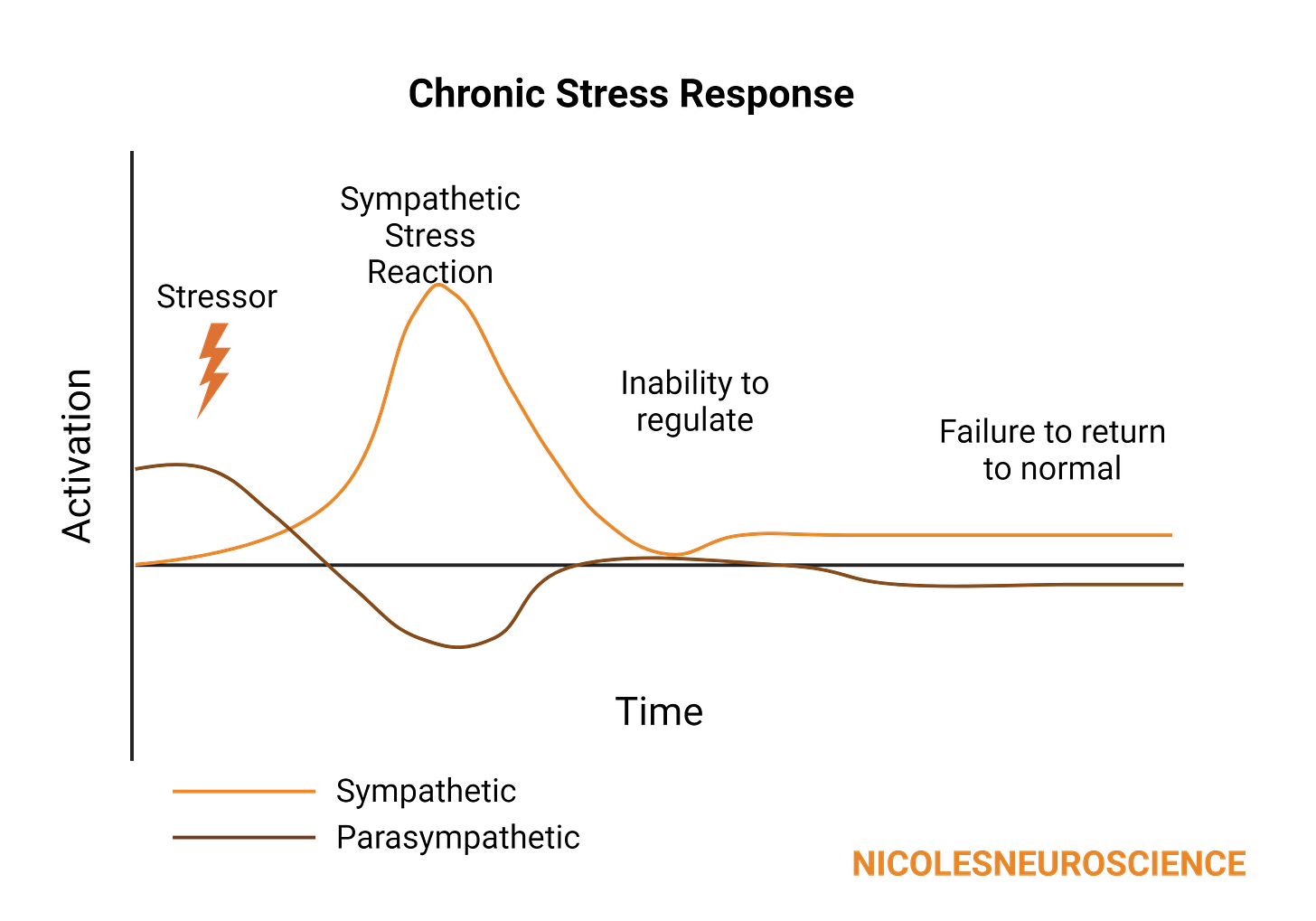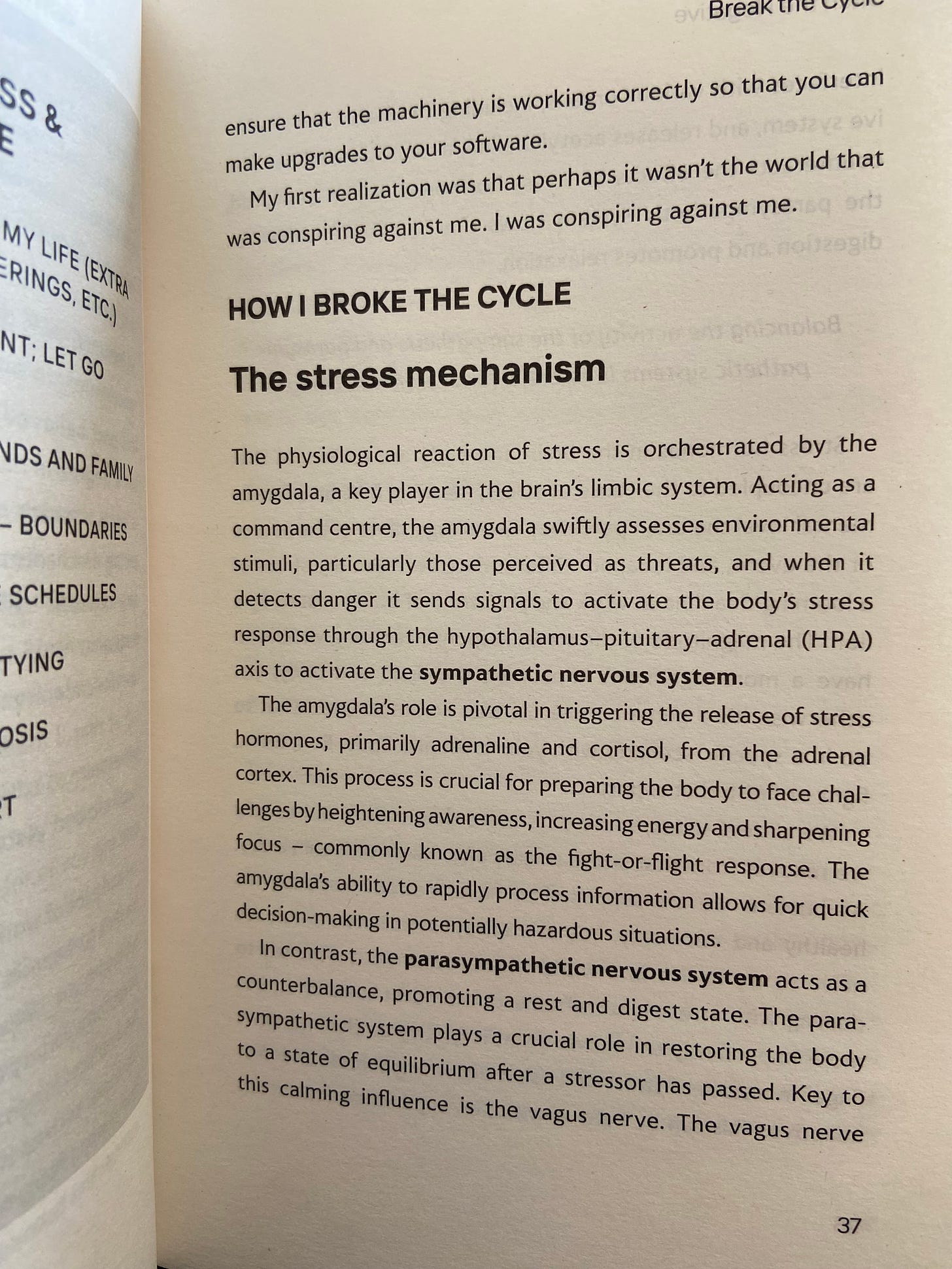Hey Brain Rewirers,
Welcome to this week's newsletter! I’m sharing the science behind some top tips to improve productivity.
Productivity
We’ve already covered how to scientifically set and achieve goals, and how our motivation and productivity are linked to our circadian rhythms. What else can we do to improve our productivity? Well, these top tips all revolve around the idea of appropriate stress levels.
Stress
Stress has gotten a bad reputation recently, and I completely get why. It is bad to be constantly living in a state of stress. Chronic stress has many negative impacts on our brain health and our overall health1. But, acute stress plays an important role in motivation, alertness, and productivity2,3. We need some level of physiological stress to perform optimally.
Acute stress (Figure 1) leads to hippocampal neurogenesis in rats4, and improved performance in humans3. Meanwhile, chronic stress (Figure 2) can lead to changes in brain structure, affecting the communication between the frontal cortex, which makes rational decisions, and the amygdala, which handles emotions. Therefore, it’s important to maintain a healthy balance of stress to promote alertness and focus for work, while also allowing ourselves to rest and relax.

If you want to learn more about different types of stress, how they affect our brain, and how we can use this knowledge to our advantage, get a copy of Rewire!
Top Tips for Productivity
Microbreaks
Taking intentional, short breaks from working can actually improve productivity. They help us to restore our attention and focus back on the task5. Microbreaks improve cortical attention control and boost subcortical arousal5. Additionally, microbreaks can reduce fatigue6. Importantly, the breaks actually need to be a break – scrolling on your phone doesn’t count! In fact, staring out at a green space improved subsequent focus and attention more than staring out into a grey space5. So, next time you’re feeling your productivity waning, try taking a one-minute break and looking at a plant!
One well-known method for microbreaks is the Pomodoro Technique.
Cold Plunge – voluntary stress!
Voluntarily exposing ourselves to moderate, controllable stress improves performance7. Feeling that we have control over the stress and being able to interpret the stress as beneficial is integral in being able to perform8. Feeling that we don’t have control over stressful situations causes impaired cortical functioning – meaning we are less able to focus and be productive9. Therefore, willingly choosing to partake in controlled stress can improve our response to uncontrollable stress by giving us a sense of confidence. And a great example of voluntary stress is a cold plunge!
Avoid Phones in the Morning
We’ve briefly talked about brain states when waking up, but let’s run through them again together. As we go from a sleeping state to a waking state, our brains transition from delta waves of deep sleep to theta waves of light sleep, and finally alpha waves of wakefulness. Theta waves are associated with a daydreaming state and relaxation, which is how we should feel as we wake up. However, going on our phones when we wake up disrupts this gentle progression and promotes alpha and beta waves, associated with a state of higher alert10,11. This disruption of the natural sleep/wake cycle can impact our focus later in the day, causing us to be more easily distracted12. This is especially true because social media use can elevate dopamine levels13. A dopamine spike in the morning will leave us chasing that dopamine high throughout the day14.
In fact, the presence of phones at any time of day drains our cognitive capacity. So, I’d encourage the removal of your phone from any working area15.
Binaural Beats
Binaural beats have been shown to promote training and learning16. Binaural beats occur when your ears hear tones of slightly different frequencies. This frequency difference causes a change in the phase of the sound wave each ear hears, which is detected by neurons in the brainstem and creates the binaural beat17. When gamma frequencies are used for the binaural beats, they produce gamma oscillations in brain waves, which play a role in attention18 and memory19. Binaural beats have been shown to improve attention20 and creativity21.
Playlists of binaural beats can be found on most music-streaming apps!
Fun Fact
Brain signals can travel up to 330 miles per hour!22
Until next week,
Nicole x
P.S. Leave a comment with any requests for future newsletters!
References
https://www.sciencedirect.com/science/article/pii/S0272494415000328
https://www.sciencedirect.com/science/article/pii/S0013935119302749
https://journals.physiology.org/doi/abs/10.1152/jn.1990.64.2.465
https://www.sciencedirect.com/science/article/pii/S0166223607001051?via%3Dihub
https://www.sciencedirect.com/science/article/pii/S0882596308003321?via%3Dihub
https://www.frontiersin.org/journals/human-neuroscience/articles/10.3389/fnhum.2013.00786/full






